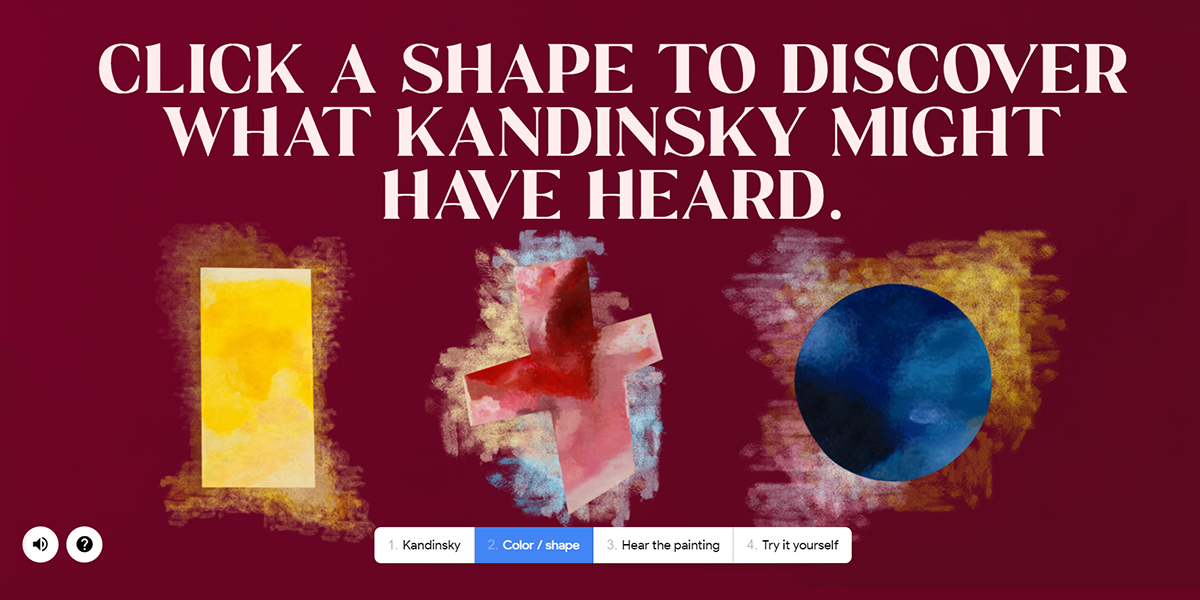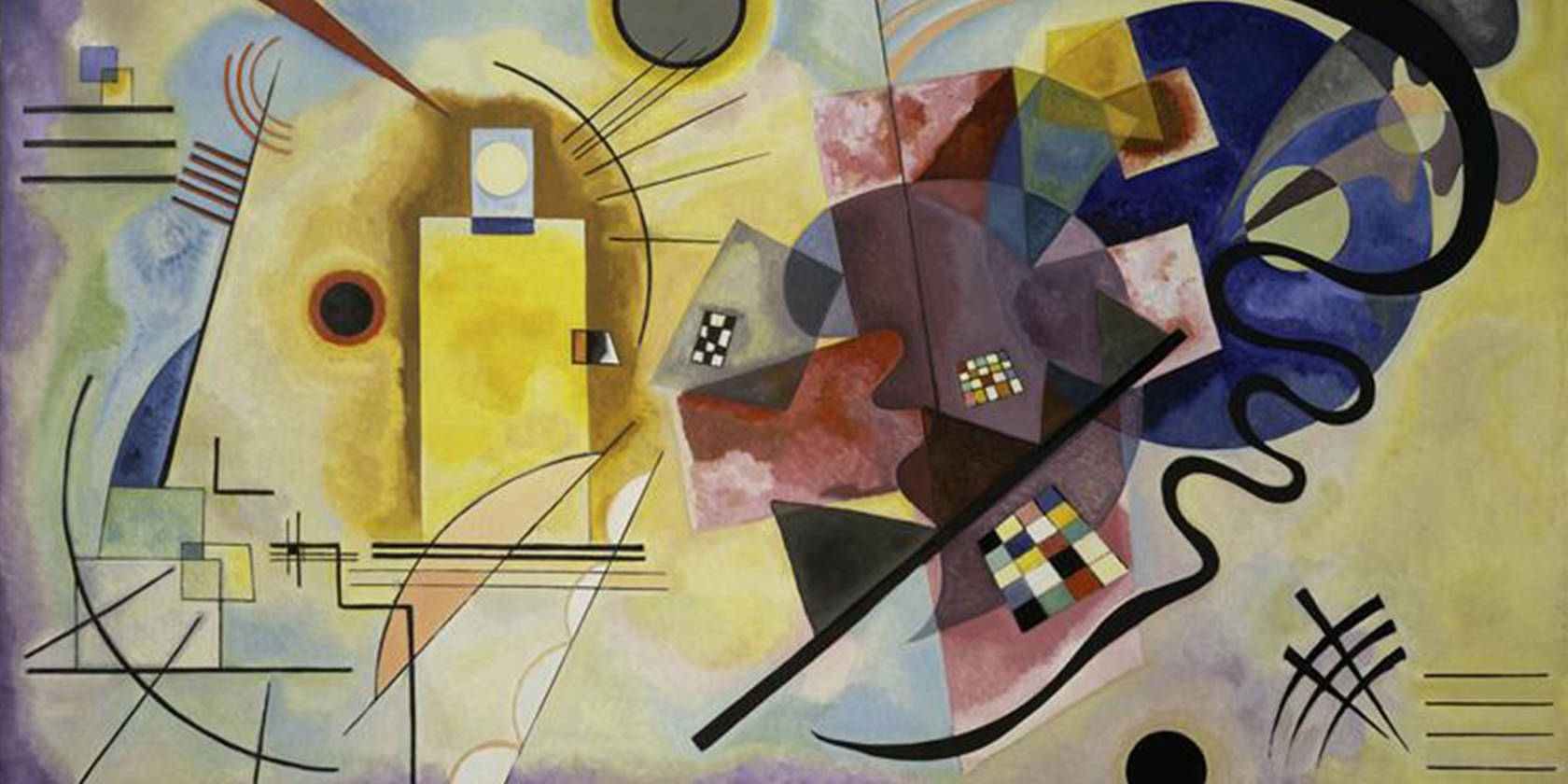Wassily Kandinsky abandoned his law career to study painting at Munich Academy of Fine Arts. He's credited one of the founders of pure abstraction in painting, and that might be due to the intriguing way he perceived colors and shapes.
This AI tool allows you to borrow Kandinsky's ears. Now you can hear what he did as he painted (or at least, Google's interpretation of what he described).
What if You Could Hear Color?
In collaboration with the Centre Pompidou in Paris, Google Arts & Culture has newly launched an experimental project called Play a Kandinsky.
As its name suggests, the interactive tool allows you to experience the abstract paintings of Wassily Kandinsky in musical form. Kandinsky was a Russian painter that had a neurological condition called synesthesia.

The score, composed by Antoine Bertin and NSDOS, was inspired by music from Kandinsky’s time and generated on Google’s Transformer neural network.
Upon clicking Launch experiment, music plays and the AI asks you to click a circle in the middle of the screen a few times. Each time you do, the colors of both the circle and the background behind it will change, as well as the music.
Synesthesia is a condition that affects your perception—stimulating one sense triggers an automatic, involuntary experience in another. For instance, a synesthete (a person with synesthesia) might think of the number "4" and see red, or taste apples when they hear the word "friend."
For Kandinsky, having synesthesia meant that he saw colors when he heard music, and heard music as he painted. "The sound of colors is so definite that it would be hard to find anyone who would express bright yellow with bass notes or dark lake with treble," he once said.

In 1925, he created a masterpiece that he called Yellow-Red-Blue (pictured above). It was an oil painting that set him apart from the influential art movements of his time, namely constructivism and suprematism.
The third part of Play a Kandinsky allows you to hear the painting in a classical symphony of seven movements. His generous uses of blue and yellow in strong contrast to each other follow the color theory of German poet Johann Wolfgang von Goethe.
Google attributes colors and forms to Kandinsky in the same way you would attribute keys and strings of an instrument to a musician. "An extraordinarily gifted artist, he arranged color sounds into color symphonies," the story reads.
There's More to Art Than Meets the Eye
We will never come to know exactly what Kandinsky heard as he worked, but it's projects like this one that really spark creativity and introspection.
Maybe there's some sort of connection between art and music that most of us aren't able to thoroughly understand. Google's experiment does a good job of exploring that possibility.
Image Credit: Wassily Kandinsky/Wikimedia Commons